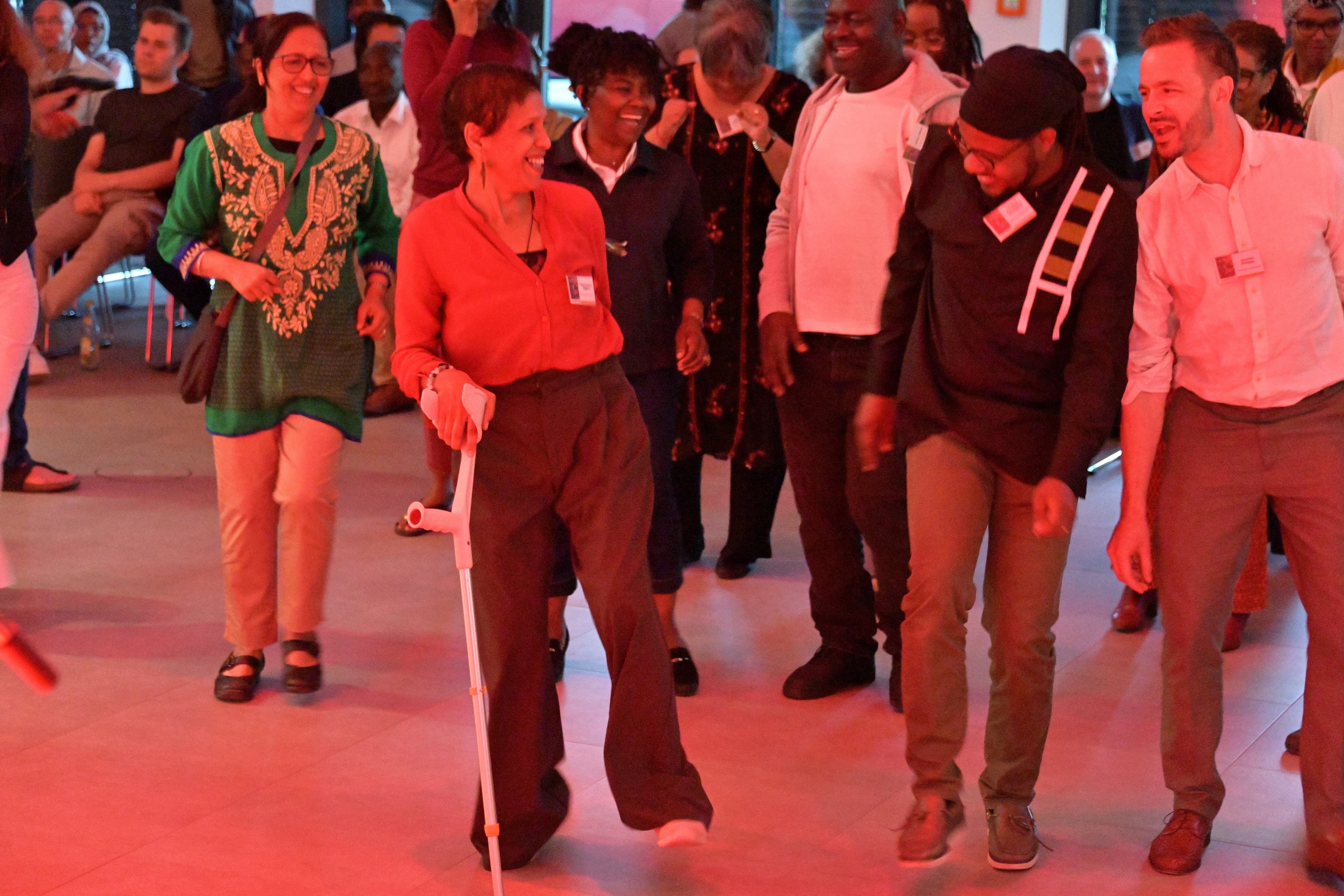News
Navigating Waithood: African Youth, Temporalities, and the Future at the Cluster’s 2025 Annual Conference
19.05.2025
The Africa Multiple Cluster of Excellence Annual Conference 2025, held from May 14 to 16 2025 at UBT’s newly opened building FZA on campus, convened scholars, artists, and practitioners to explore the theme “Temporalities, Youth (Im)mobilities, and Agencies: Africa on the Move.”
Bringing together more than 250 international participants both on-site and online, this interdisciplinary conference delved into the complex temporal experiences of African youth, particularly focusing on the concept of “waithood” – a prolonged period of transition to adulthood characterized by uncertainty and systemic challenges.
Keynote Address: Navigating the Complexities of Waithood
The conference commenced on Wednesday evening (14 May) with a keynote lecture by Professor Grace Adeniyi-Ogunyankin from Queen’s University, Canada. Her presentation, entitled “The (Im)possibilities of Waiting: Precarity, Creativity & Embodied Youth Labour in Africa,” examined how African youth navigate the uncertainties of waithood. She highlighted how young people strategically utilize breaks in existing power structures to forge alternative life paths, embracing new forms of self-determination beyond traditional linear life courses. A riveting concert featuring Les Soeurs Doga & DJ Marek closed the concert’s inaugural day Hailing from Burkina Faso the musicians made perfect use of the new space and greatly enriched the conference’s cultural dimensions.
Diverse Panels and Roundtables: Exploring Youth Agency and Temporalities
The beginning of the second conference day saw a roundtable that contributed to discussions on transdisciplinary approaches and collaborative research, as implied in the broader reflections on the conference’s structure. It brought together perspectives from Europe and Africa. This roundtable featuring among others the musicians from the opening night addressed the challenges and potentials of fostering collaborative scholarship bridging disciplinary boundaries and geographic divides, with an emphasis on creating more inclusive and critically engaged research paradigms.
Subsequently, the conference featured 12 thematic panels, each offering unique insights into the lived experiences of African youth. This diverse range of panels explored various dimensions of African youth temporalities, mobilities, and agencies. One of the central discussions focused on migration as a form of waithood, highlighting how young Africans navigate uncertain journeys across cities and regions in search of opportunity, often finding themselves trapped in prolonged states of liminality. Another panel explored the language of youth engagement, investigating how communication strategies and generational discourses shape youth participation in governance and activism.
Themes of continuity and transformation emerged in the panel on African knowledge traditions, which examined how indigenous epistemologies persist and evolve in contemporary contexts, particularly through youth reinterpretations. The panel on social movements and temporalities analysed how youth-led movements challenge dominant narratives of time and development, creating new temporal logics of resistance and solidarity. In a forward-looking exploration, the post-waithood futures panel speculated on how youth trajectories might unfold in the near and distant future, offering critical insights into what comes after prolonged transitions. The panel on emerging moralities addressed how rapid social change is giving rise to new ethical frameworks among youth, often caught between traditional values and neoliberal influences.
Another key area of discussion was how youth identities and languages intersect in multilingual societies, with participants examining how language becomes a tool for both belonging and resistance. The “glocal crises” panel looked at how global challenges such as climate change and economic instability intersect with local realities, shaping the futures of African societies and their youth.
Historical memory featured prominently in the panel that revisited the legacies of Biafra, where intergenerational trauma and historical consciousness were unpacked through the lens of affective temporalities. The panel on popular cultures and religion illuminated how youth engage with music, media, and spiritual practices to forge identities and articulate agency in rapidly changing environments.
A case study of political mobilisation was offered in the Kenyan youth protest panel, which analysed the “Ruto Must Go” movement as a dynamic example of youth political engagement and state contestation. Lastly, the navigating waithood panel returned to the conference’s core theme, exploring how African youths experience and respond to the entangled pressures of systemic delay, structural exclusion, and precarious futures.
Marking the final slot on this year’s conference agenda, the roundtable organized by the Cluster’s Gender and Diversity Office’s Dr. Christine Vogt William served as a space for generating African futurist visions through transgenerational Black Feminist and Afro-Feminist perspectives. This session aimed to interrogate gendered dimensions of waithood and youth agency. While gender was not a prominent theme in most panels, this roundtable emphasized the importance of intersectional feminist frameworks in envisioning alternative futures and understanding how youth navigate temporal and socio-political structures from marginalized positions.
Additionally, a vernissage was held on Wednesday evening for the exhibition “The Tree of Oblivion. Transatlantic Memorial Echoes”. The presentation is part of a Cluster project and brings together sound and visual fragments from Togo and Benin, enabling an immersion in the memorial echoes of the transatlantic slave trade.
Concluding Reflections: Bridging Scholarship and Experience
In his concluding speech, Prof. Anthony Okeregbe, Annual Theme Fellow from the African Cluster Centre at the University of Lagos, emphasized the conference’s role in fostering dynamic exchanges on youth temporalities and mobilities. He highlighted the critical examination of waithood, not as a passive condition but as a complex temporal state fostering both negative and creative agencies. Okeregbe also noted the under-representation of youth among panelists, prompting reflections on who defines youth and how youthhood is conceptualized in Africa. He underscored the importance of North-South collaborations in enriching discussions and perspectives. For him, the conference’s cultural events, such as the concert and the vernissage, symbolized the bridging of gaps between scholarship and lived experience, emphasizing the need for academic detachment to give way to interpersonal engagement.
For more pictures from this year's conference please visit this link. Photo credit for all pictures is Africa Multiple Cluster of Excellence/Robert Götze






































